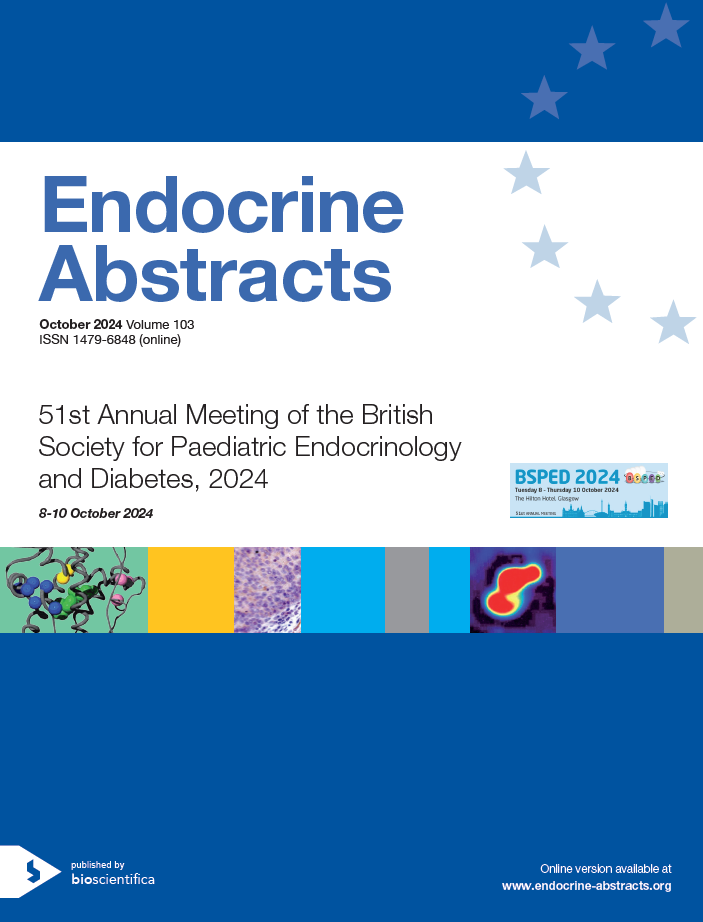
51st Annual Meeting of the British Society for Paediatric Endocrinology and Diabetes
Glasgow,
UK
08 Oct 2024 - 10 Oct 2024

Poster Presentations
Bone 2
ea0103p76 | Bone 2 | BSPED2024
The acceptability of preventative bisphosphonate therapy prior to fracture: perspectives of young people with duchenne muscular dystrophy, parents/carers and health professionals
Mountain Danielle , Crabtree Nicola , Wood Claire , Wong Sze Choong. , Bray Lucy
ea0103p77 | Bone 2 | BSPED2024
Parathyroidectomy in paediatric sporadic primary hyperparathyroidism
Prentice Philippa , Oh Han Boon. , Abdel-Aziz Tarek , Butler Colin , Chesover Alexander D. , Brain Caroline , Allgrove Jeremy , Kurzawinski Tom
ea0103p78 | Bone 2 | BSPED2024
Safety and efficacy of long-term continuous subcutaneous PTH (1-34) infusion therapy (CSPI) for severe autosomal dominant hypocalcaemia type 1 (ADH1) in children and young people
Perogiannaki Aikaterini , Alattar Mohammad Meshari , Baske Kishore , Gorrigan Rebecca J. , Smith Oladimeji , Pullen Debbie , Sankaranarayanan Sailesh , Allgrove Jeremy , Gevers Evelien
ea0103p79 | Bone 2 | BSPED2024
A case of intractable infant hypocalcaemia due to GCM2-mutation linked hypoparathyroidism
Sothyarunasalam Uthayageetha , Makaya Taffy , Basu Supriyo
ea0103p80 | Bone 2 | BSPED2024
A late presentation of autosomal dominant hypocalcemia type 1 (ADH1)
Megahed Ahmed , Daskas Nikolaos
ea0103p81 | Bone 2 | BSPED2024
Management of prolonged refractory hypercalcaemia secondary to denosumab cessation: a case presentation
McBay-Doherty Rhiannon , McKay Catriona , Heffernan Emmeline
ea0103p82 | Bone 2 | BSPED2024
Cardiovascular risk and achondroplasia: a systematic review
Lo* Irene , Meti* Shraddha , Mason Avril , Lucas-Herald Angela



